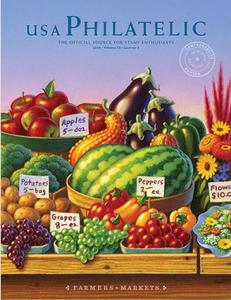Farmers Market Values
For most of us, there’s no better place to buy fruits and vegetables than at a farmers’ market. Period. The talk about high prices isn ’t entirely unjustified, but it can be countered, and I’ll get to that in a minute.
’t entirely unjustified, but it can be countered, and I’ll get to that in a minute.
What’s inarguable is that farmers’ markets offer food of superior quality, help support smaller-scale farmers in an environment that’s more and more difficult for anyone not doing industrial-scale agriculture, and increase the amount of local food available to shoppers. All of this despite still-inadequate recognition and lack of government support.
Then there’s “know your farmer, know your food.” When you buy directly from a farmer, you’re pretty much guaranteed real freshness (we’ve all seen farmers’ market produce last two or three times longer than supermarket produce). You’re supporting a local business — even a neighbor! And you have the opportunity to ask, “How are you growing this food?” Every farmer I’ve spoken to says — not always in a thrilled tone — that the questions from shoppers never stop. But even if a vegetable isn’t “certified organic,” you can still begin to develop your own standards for what makes sense and what doesn’t.
Farmers’ markets are not just markets. They’re educational systems that teach us how food is raised and why that matters.
“Producer-only” farmers’ markets, as opposed to markets that sell food from anywhere, are really the ideal. The organizations that run these tend to be nonprofits, and often use volunteers to keep going. In many cases they are mission-driven: organizers want to make sure small farms remain viable and that we — nonfarmers — have access to good local food. At this stage of the game, there is no higher cause.
The quality of produce in producer-only markets — that is, places where people sell what they grow — is phenomenal, especially right now. If you’re going to complain that tomatoes are $6 a pound in some markets (they are; they’re also sometimes 99 cents), you might also note that usually these are real tomatoes, sometimes explosive in flavor, whereas the $4 per pound tomatoes I bought in the supermarket this week were grown in water and were less tasty than your average canned tomato. To some extent, you get what you pay for.
Advertisement
Then again, there are often bargains on incredibly high-quality produce for anyone who is willing to shop. Last week, at a recently opened market near Washington, D.C.’s convention center, I bought tiny lavender “fairy tale” eggplants for less than $3 a pound. The Saturday before last, at New York’s Union Square Greenmarket, I found perfectly ripe, real apricots for $5 a pound. (A chef strode up next to me and bought two cases; the farmer had only three total, which is why you want to go early.) That may sound expensive, but if you want a real apricot, this is the only way to get it.
At the 37-year-old market on 175th Street in Washington Heights, I found purslane — a salad green I’ve been foraging for 40 years, and that I adore — and bought a bunch as big as my head for $2. I found papalo (also called Bolivian coriander), a delicious, strong-tasting green I’ve bought every time I’ve seen it since I first tasted it in Mexico a few years ago.
Advertisement
And at the tiny farmers’ market in Truro, on Cape Cod, now in its second year, I bought lobsters for 40 percent less than they cost in local stores, pork jowls for $2 a pound, and gorgeous half-yellow, half-green summer squash for a dollar each; they were worth it.
With more than 8,000 farmers’ markets nationwide (representing something like 50,000 farmers, according to the Department of Agriculture), potentially millions of people are being affected by similar experiences. That’s a great thing. And this week — National Farmers Market Week — a commemorative postage stamp is being introduced at a ceremony in Washington on Thursday. Present will be Bernadine Prince, co-executive director of FreshFarm Markets in Metro DC, which runs 13 producer-only markets, and president of the Farmers Market Coalition. Prince said to me, “Farmers’ markets are an economic engine that keeps farmers going.” Yes, that too.
That’s good for everyone, but things could be better. It’s clear to me — after visits to farmers in New York, New Jersey, Massachusetts and California, to farmers’ markets wherever I’ve traveled in the last few years, and recent conversations with Prince, Michael Hurwitz (director of New York’s Greenmarket), Francie Randolph (who runs Sustainable CAPE and founded the Truro market last year), and others — that a few key improvements could make it easier for farmers and markets to thrive.
